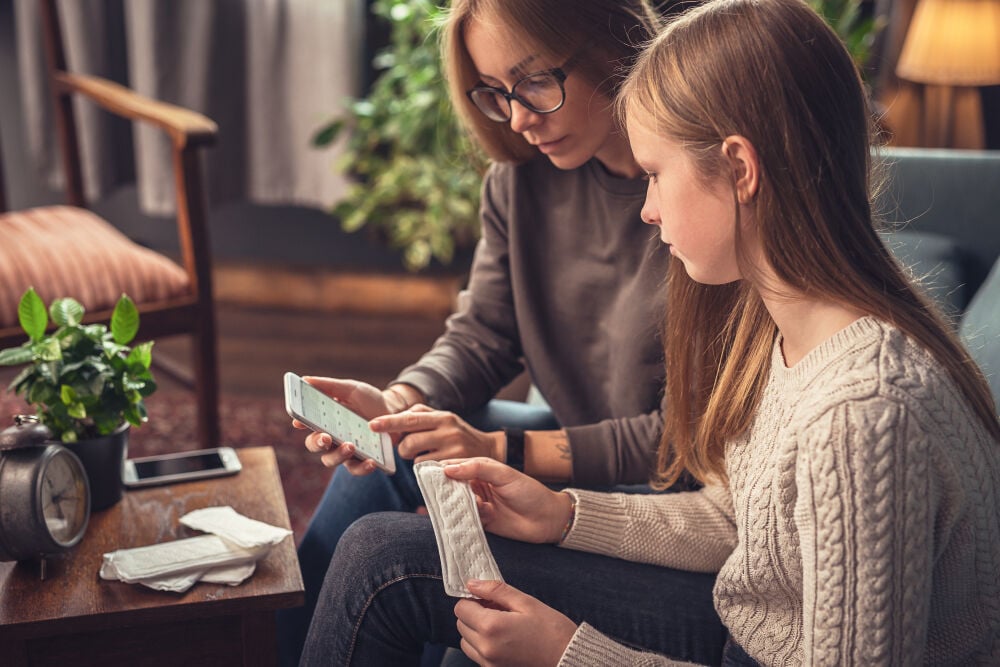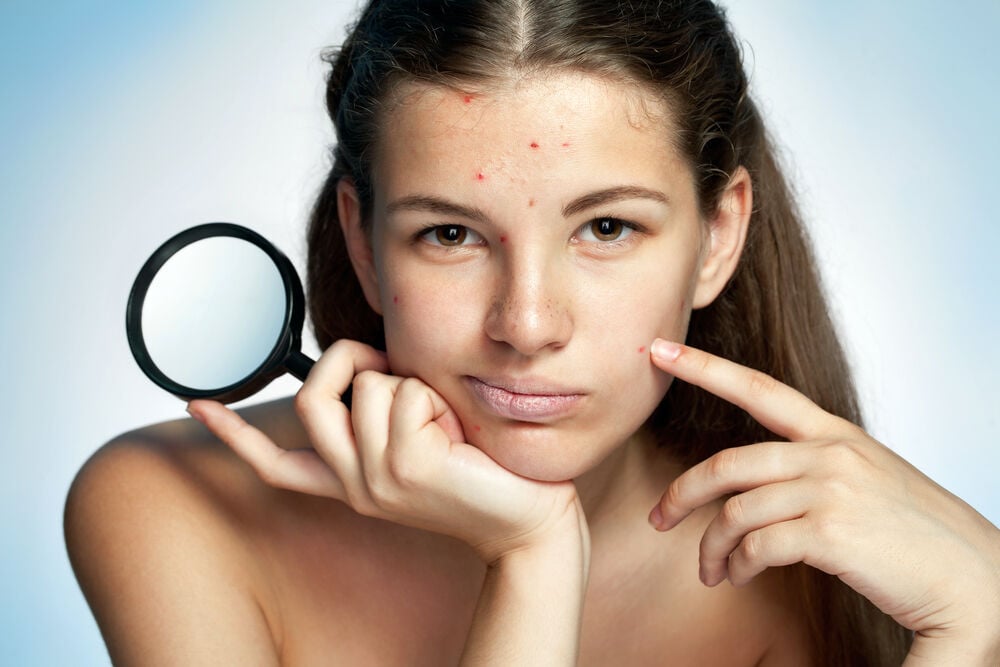As you’re growing, transitioning from childhood to adulthood, your body goes through a number of changes to prepare you for the life ahead. In this article, we’ll take a closer look at some of the puberty body changes that you go through as a girl.
-
Tracking cycle
-
Getting pregnant
-
Pregnancy
-
Help Center
-
Flo for Partners
-
Anonymous Mode
-
Flo app reviews
-
Flo Premium New
-
Secret Chats New
-
Symptom Checker New
-
Your cycle
-
Health 360°
-
Getting pregnant
-
Pregnancy
-
Being a mom
-
LGBTQ+
-
Quizzes
-
Ovulation calculator
-
hCG calculator
-
Pregnancy test calculator
-
Menstrual cycle calculator
-
Period calculator
-
Implantation calculator
-
Pregnancy weeks to months calculator
-
Pregnancy due date calculator
-
IVF and FET due date calculator
-
Due date calculator by ultrasound
-
Medical Affairs
-
Science & Research
-
Pass It On Project New
-
Privacy Portal
-
Press Center
-
Flo Accuracy
-
Careers
-
Contact Us
Puberty Body Changes: 6 Common Puberty Symptoms


Every piece of content at Flo Health adheres to the highest editorial standards for language, style, and medical accuracy. To learn what we do to deliver the best health and lifestyle insights to you, check out our content review principles.
What happens when you go through puberty?
Puberty is the transition from childhood to the final stage of maturation that allows for reproduction. Puberty begins with a hormone called gonadotropin-releasing hormone, which comes from a part of your brain known as the hypothalamus and kicks off a hormonal chain reaction.
Gonadotropin-releasing hormone stimulates your pituitary gland to release follicle-stimulating and luteinizing hormones. The follicle-stimulating and luteinizing hormones tell your ovaries to produce sex hormones from your ovaries (mainly estradiol). In men, these hormones stimulate the testes to produce testosterone.
All of these hormones are responsible for the various bodily and emotional changes that you go through during this time of your adolescence. As a girl, puberty lasts on average from about the age of 9 to 15. At this point, you can get pregnant and give birth to a baby.
Puberty in boys lasts a bit longer, usually from age 10 to 17.
Puberty symptoms
You will start to notice some changes in your body as you approach a double-digit age. These puberty symptoms are quite similar in all adolescents. However, not all of them follow the same pattern. For example, your best friend might have fully developed breasts (known as thelarche) by the age of 13, whereas yours might not fill out until you are 16.
Below, we’ll go through some of the signs of puberty that you’ll probably experience.
1. Pubic and axillary hair
The growth of pubic hair — also known as pubarche — is one of the things female puberty usually begins with. At first, you’ll notice light, straight, soft hairs growing in your pubic area. As you progress further into puberty, the hair gets longer, thicker, and coarser.
Taking on a triangular shape, this patch of hair will also spread to your inner thighs. You might also notice that hair has begun to grow under your armpits as well (axillary hair).
2. Periods and vaginal discharge

Around two years after the start of your puberty, you might notice some vaginal discharge or even blood in your underwear. This could very well be your first period — menarche.
During this point in your adolescence, the follicle-stimulating and luteinizing hormones are having a regular effect on your ovaries. You are able to ovulate (when your ovary releases an egg). If there is no sperm to fertilize the egg, you get your period (menstruation).
Getting your first period can be tough if you don’t know what to expect. An adult you trust can answer any question you might have on what to do before and after your first period. On average, the length of time from the start of breast development to menstruation is typically 2.5 years.
3. Weight gain and peak growth
What happens when you go through puberty is mainly centered on the growth and maturation of your sexual self. However, your whole body goes through significant changes, especially with regards to your weight and height.
You might appear curvier than before as the fat in your body moves to new places. Typically a lot of it will be deposited around your thighs, hips, and breasts. You will also grow considerably taller during this time.
Girls tend to experience this growth spurt earlier than boys. Don’t be surprised if you are taller than the boys in your class when you come back to start a new school year.
4. Breast development
For many, the first sign of puberty in girls is the development of breasts. When you’re around nine years old, you’ll notice that breast buds are developing on your chest just under your nipples. In some instances, these can be tender and sore. This is completely normal and nothing to worry about. The tenderness is a result of the new breast tissue growing and establishing itself. The breasts will finish developing around age 15, although this happens at different times for different girls.
5. Voice change
During puberty, your voice is also likely to change. This is because the sex hormones we told you about have an effect on your voice-producing mechanism. Estrogen and progesterone cause your voice to lower a bit. The typical female voice is one third lower in frequency than a child’s voice.
In boys, testosterone and androgen cause the voice to drop a whole octave lower than a child’s voice.
6. Acne and breakouts

During puberty, hormones cause your sweat and sebaceous glands to become more active. Your skin might break out as your pores become clogged with excess oil (sebum). The most common places for acne to show up are on your face, back, and sometimes chest.
Acne affects everyone in their pubescent years. Girls might notice periodic breakouts because of cyclic surges in their sex hormones.
When does puberty end for girls?
For girls, puberty usually ends around age 15, when all the secondary sex characteristics have developed. At this age, your breasts have probably filled out, although they might continue to increase in size throughout your teens. Your pubic hair has finished growing in, appearing on the inner thighs as well as the lips of your vagina. Your vagina and reproductive organs are fully developed at this stage, and your hips and thighs may also have filled out.


Hey, I'm Anique
I started using Flo app to track my period and ovulation because we wanted to have a baby.


The Flo app helped me learn about my body and spot ovulation signs during our conception journey.


I vividly
remember the day
that we switched
Flo into
Pregnancy Mode — it was
such a special
moment.
Real stories, real results
Learn how the Flo app became an amazing cheerleader for us on our conception journey.

